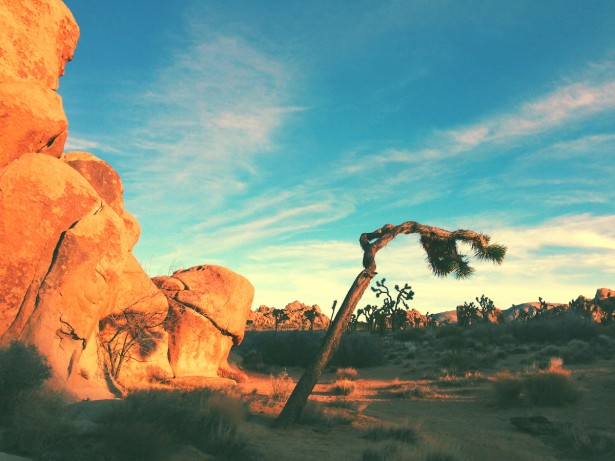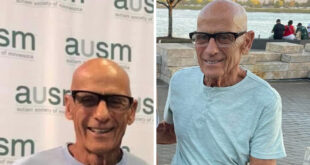A report in the Desert Sun newspaper identifies Highway 62 between Palm Springs, CA and Parker, AZ as a “death trap”, saying that the road is 3 times deadlier than average California highways. The newspaper also claims that the portion of the road that lies between Twentynine Palms and Parker (the stretch closest to the Arizona border) is deadlier still, at 12 times the average.
The Parker area is a magnet for Southern California traffic year round, especially on summer weekends. There are various routes such traffic can take – I-10 to US 95 via Blythe, or I-10 to Mohave Road via Ehrenberg – but the most popular choice has always been I-10 to CA 62 via Desert Center. Is this choice a bad one? If the Desert Sun report is to be believed, the 62 is to be avoided.
Digging into the data
The report includes 16 vehicle fatalities for the stretch of Highway 62 between the Desert Center turnoff and Parker, AZ from 2002 until 2012. 9 out of those 16 were head-on collisions (or other multi-vehicle crashes). The other 7 were single vehicle accidents, with some going off the road and hitting the embankment (soft shoulder) and some rolling over.
11 of the 16 fatalities happened between Memorial Day and Labor Day, which is peak season for river recreation and much of the draw to the Parker area. 5 of the crashes happened on a Thursday, 3 on Mondays, 3 on Wednesdays, 2 on Fridays, 2 on Saturdays and 1 on a Sunday. None happened on a Tuesday.
The majority of the incidents happened in the daytime (between 10am and 5pm). Only 3 happened in the early morning or evening when the sun is lowest in the sky, which suggests the ‘blinding effect’ cited in the report may be statistically insignificant, at least with respect to the eastern stretch of Highway 62.
Speed did not seem to be a particularly prevalent factor. Out of the 16 crashes, we have speed data for 11 of them, and out of those, 8 of them recorded speeds that fell within or not far above the 65 mph speed limit. One was far below the limit, and only 2 were truly excessive.
Susprisingly, alcohol and drugs did not play a role in most of the crashes either. Only 5 of the 16 incidents involved alcohol at all, and 3 of those 5 had blood alcohol content that was below the legal limit (0.06, 0.07 and 0.02). Only 2 of the 16 cases involved drugs; one meth and the other ‘an unknown cannabinoid’.
Then why is the 62 so deadly?
If alcohol and drugs were not a particularly prevalent cause of the fatal crashes over the past 12 years, and speed wasn’t a factor for most of them, and drivers weren’t being blinded by the sun, then why is the highway considered so deadly?
The answer might be summed up in two words: vehicle drift. When a vehicle drifts across the center line and the road does not have a barrier or median of any sort separating traffic going in opposite directions, a head-on collision is possible. That explains the 9 out of 16 cases cited above. Similarly, when a vehicle drifts off roadway to the right and hits the embankment, it can roll over or flip. That explains the other 7 cases cited above.
But why are vehicles drifting, if not from alcohol, being blinded or speeding? It is difficult to measure things like the drowsiness and distractedness of drivers. But the Desert Sun report hints at the engineering of the road, putting Caltrans on the defensive. According to experts and CHP officers, there may be little margin for error on the 62. One expert told the newspaper, “This is a road where someone needs to understand what is going on. You’ve made a case that is worthy of investigation by Caltrans.”
There is some investment in road safety happening. Regarding one section of the 62, the report says: “To combat crashes on this stretch of highway, Caltrans plans to widen shoulders and install rumble strips on three half-mile sections of the highway. The project, which is estimated to cost about $3.1 million, is scheduled to begin in the summer of 2018.”
Other routes
One reason people use the route between Parker and Desert Center (CA 62 and CA 177) is that they consider it faster. Anecdotes suggest that people consider it 30 to 45 minutes faster than the route through the CRIT valley to Ehrenberg.
But since the difference in distance between the routes is only 11 miles, navigation software estimates the time saved at much less than half an hour. The average estimate (across Google, Apple, Bing, Yahoo and Mapquest) was 16 minutes’ difference between the two routes. (Apple software in particular recommended going through the valley and across Agnes-Wilson Bridge to US 95 and meeting I-10 in Blythe.)
If Highway 62 is a “death trap” as the Desert Sun says, is Mohave Road any better? Parker Live does not have comparable statistics. But if the speculation is right, factors causing fatalities by vehicle drift on the 62 are not present on Mohave Road, which is flat, straight and slightly slower.
So it may be worth an extra 16 minutes of your time.
 Parker Live News from the Parker Strip since 2009.
Parker Live News from the Parker Strip since 2009.





In other news, water is still wet and my cat’s breath smells like catfood.
Not hard to figure, more people use that road, there statistically would be more crashes.
As someone from SoCal who drives into Parker frequently I can say that roadside “drift” is a big part of the problem. I’ve seen and almost been a part of close collisions where drivers ‘fade’ into oncoming traffic. Maybe it’s just because the 62 is a long desert road without much scenery to keep you engaged like it does through Erinberg. Everyone talks about how dangerous Rice Road is and it’s no secret to those of us who commute frequently. To me the extra 20 mins and most importantly the much less stress involved in going through Blythe and Erinberg is worth it. Besides you can always stop by the Courtesy Cafe or Rebel BBQ on the way.. How can you beat that!
It is a trap!
We, Me and my Wife, are from Los Angeles, and we planned to go for a road trip to Grand Canyon.
On the way back, we decided to stop for night at Lake Havasu city.
then we decided to explore some of the southern part of Havasu city, and then looking at google map, I found that I can go through this road and get to Palm spring and then only go back toward Los Angeles.
So simply followed the google map, and gook highway 62 and then 177 toward Palm spring.
What I did not know, was that there is no living thing for next 135 miles. Luckily my tank was full.
I was exciting, also there was some traffic, which give us some peace of mind.
But we were little concern at almost end of it. This road does not have any sign at start of it.
At least a sign to say how far is the next gas station!
We crossed with no incident, but I was always wonder about it. It was exciting to drive in such road, but when I ready your article today, it gave me a better picture about it.
I think I will not take any road without knowing about it ever again.
Don’t follow any GPS map without having some information about it.
It’s unsafe because it’s a 2 hour drive on a long and twisty 2 lane road that have the whoop section before Parker. People push the limits out of boredom or angst to get to their destination. No one mentioned the flash flooding in August/semptember every year. Got caught in those 2x in my life. Stuck looking for high ground for hours. I take 10fwy to Mohave road. Straight 2 lane hwy for 45 minutes and then straight 10fwy w/4 lanes. Little longer but easy on the eyes and mind.
The signs on Highway 62 from apple Valley do not show direction to Highway 10 until you are at the 24 hour gas station near needles. Unless you know that highway 177/78 Desert Center is actually on highway 10, you will wind up in Blythe AZ.
I worked CA SR-62 from September 1996 to April 2002. I conducted numerous collision investigations during my tenure. Appropriately 95 percent of the collisions involved a solo vehicle running off the roadway onto the right dirt shoulder and the driver turning the steering wheel back to the left abruptly. The vehicle would rotate counterclockwise as it skidded at a slight angle to the roadway alignment. As the wheels traveled onto the opposite dirt shoulder, they would dig into the soft dirt and a lesson in physics would play out, i.e. vehicle would roll over. The drivers and passengers who chose not to wear a seat belt got a second physics lesson for free. The roadway surface was designed in the 50’s with a crown to allow rain water to flow to the shoulders. Over time, the wheels of heavy trucks caused slight ruts to form along the traffic lanes. Lack of effective maintenance was apparent. Driving along at 65 mph required the utmost concentration from drivers. Just a split second of inattention on the part of the driver often resulted in the aforementioned physics lesson (#1).
then the squealing of my husband’s tires as he tried to recover from his vehicle back onto the road, his exclamation of what was occurring, then some rustling as his truck rolled (again as you described), then the phone went dead. He he had no choice but to veer to the right on the soft shoulder, a very valid reason to veer off the road, not his fault, and had no idea how sift the shoulder was. Yet the CHP officer had the AUDACITY to write in the accident report (just received) that my husband violated VC22107, maybe to continue to shift the blame to the drivers instead of CA taking responsibility for “their road. ? I traveled the road and went to the crash site. Bottom line: The road lanes are too narrow, speed limit (65) too fast for that road considering the shoulders a very soft sand,, no lights at night (not even reflectors), minimal/no warning signage, lack of stop signs/signals at intersections, large dips making it impossible to visualize oncoming traffic at times, poor road condition (cracks, digits, etc), no rumble strip between the two lanes,, very poor visibility of the road edge at night where it abruptly transitions to soft sand. This road has been a known problem, with numerous fatalities for many years and needs some attention before any more individuals get hurt or lose their lives. I’ve contacted several attorneys. If anyone else is interested in possible doing a class action, please contact me at .
M.G. Tops, My husband (deputy sheriff, ret) was killed on this same r exactly as you described. He was on a hands-free free phone call with me where he relayed that the truck in front of him slammed on their brakes. My husband veered off to the right to avoid hitting the truck in front of him. Then I could hear squealing of my husband’s tires as he tried to recover his vehicle back onto the road. I heard his exclamation of what was occurring, then some rustling as his truck rolled (again as you described), then the phone went dead. He he had no choice but to veer to the right on the soft shoulder, not his fault, had a very valid reason to veer off the road, and had no idea how soft the shoulder was. Yet the CHP officer had the AUDACITY to write in the accident report (just received) that my husband violated VC22107, maybe to continue to shift the blame to the drivers instead of CA taking responsibility for “their road. ? I traveled the road and went to the crash site. Bottom line: The road lanes are too narrow, speed limit (65) too fast for that road considering the shoulders a very soft sand, no lights at night (not even reflectors), minimal/no warning signage, lack of stop signs/signals at intersections, large dips making it impossible to visualize oncoming traffic at times, poor road condition (cracks, digits, etc), no rumble strip between the two lanes,, very poor visibility of the road edge at night where it abruptly transitions to soft sand. This road has been a known problem, with numerous fatalities for many years and needs some attention before any more individuals get hurt or lose their lives. I’ve contacted several attorneys. If anyone else is interested in possible doing a class action, please contact me at .